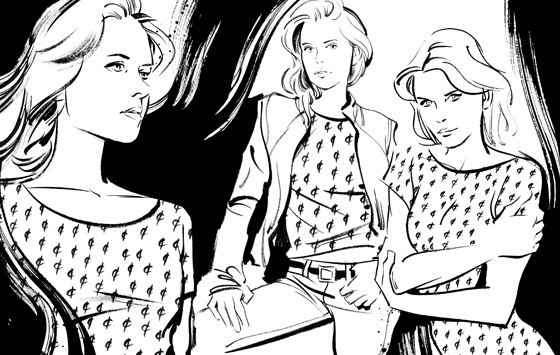
The story of what’s happened to bargain clothing, and where the business is headed next, can be told by a sickly green pair of cargo shorts made in Dhaka, Bangladesh. A photo of them recently landed in my in-box, sent by a factory owner whom I’d met with last year. Other factories I checked out while posing as a garment buyer similarly continue to alert me to their latest deals on caches of cut-rate fashion; I’ve been offered miniskirts for $5 wholesale, studded knit tops for $7. If I ran a chain like Topshop or Forever 21, I’d set a markup on such items of around 125 percent—and still sell them for half what a hamburger costs at a good restaurant. But those cargo shorts, with their bulk price of $3.20 each, represent the new frontier of chintziness toward which the fast-fashion industry now seems headed.
Over the past decade, image-conscious American consumers have adopted two contradictory impulses. When buying food, they will pay a premium for the sustainable and artisanal, and they are careful to always recycle the glass jugs that their farmers’-market milk is sold in. It is fashionable to eat this way—even as a whole category of actual fashion is treated as disposable, with no thought given to craftsmanship or provenance. Shopping as a hobby used to be something only society women did, but now people of more modest means can (and do) update their wardrobes multiple times per week. Even as incomes for all but the highest earners have stagnated, the average American acquires 68 new garments annually. (Count how many clothing-store bags you see on your next weeknight subway commute.) To meet the demand, Forever 21 alone cycles through at least 100 million different tops, trousers, belts, and socks per year.
Most cheap-but-chic clothing is made in China. During my trip, I visited a few of its factories, where I was greeted by salesgirls fluent in Skype and in-house designers who can draft a knockoff in ten minutes. But I also saw something else: The factory workers making fast-fashions for the U.S. market were wearing the same trends themselves. As China develops a consumer economy, its workers are driving up their pay. Some manufacturers saw a 10 percent increase in wages in the first two months of 2012, turning the country into a not-so-affordable place to make clothes.
That’s why retailers are shifting production to places like Bangladesh, where garment workers earn a minimum wage of $43 a month; H&M now produces 25 percent of its goods in the country, and announced in May that it aims to increase that share. I don’t know what the factories H&M is using look like, but Bangladeshi facilities generally lack the ability to sew the more complex styles that China’s can handle; nor do they have the room-size embroidery machines, or mills dedicated to making only sequins, so they tend to specialize in very basic clothes like T-shirts and shorts. The middlemen who represent the factories usually would not let me meet with them on-site—as Chinese factories did, hosting me in gleaming showrooms—but instead do business out of smoky apartments and hotel lobbies. When I tried to get one to work with me on sourcing a teal cotton camisole, he balked, saying I’d have to import the fabric, costing precious time. But he offered me a solution: I could switch to a synthetic that felt gritty against my skin. The factory rep called it “cashmerelike.”
Cline is the author of Over-Dressed: The Shockingly High Cost of Cheap Fashion
Have good intel? Send tips to intel@nymag.com.